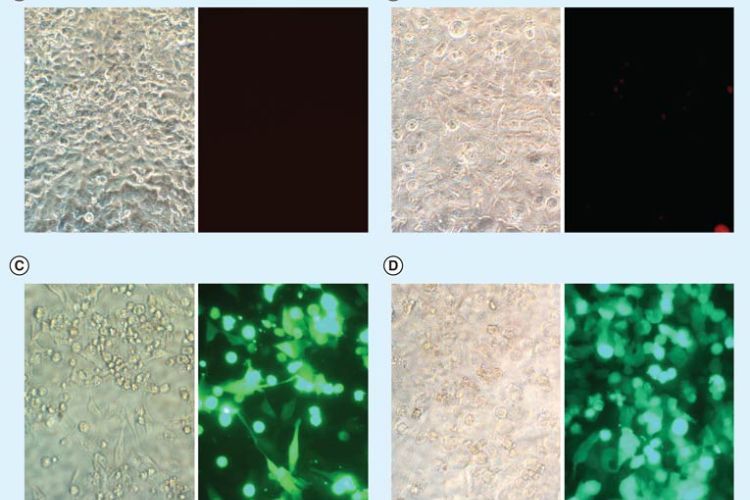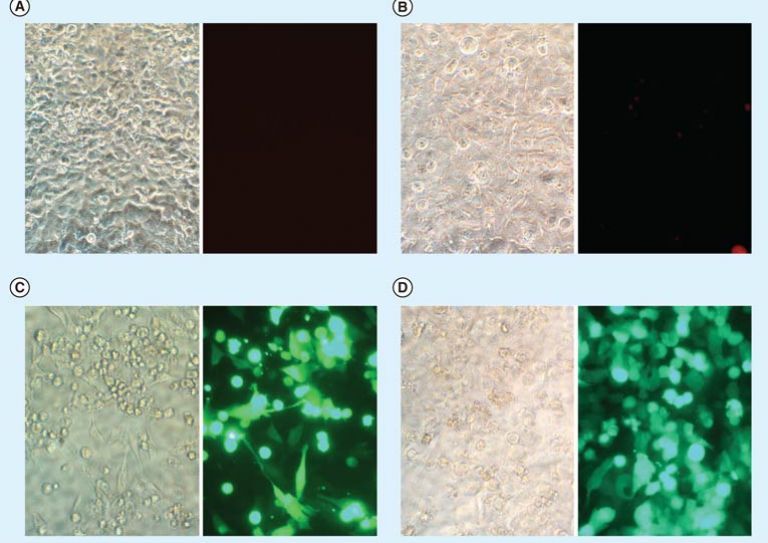Breadcrumb
A Nonviral Vector with Transfection Activity Comparable with Adenoviral Transduction
What is it?
One approach to the gene therapy of cancer is to deliver a "suicide gene" to cancer cells that will turn a pro-drug (e.g. ganciclovir) into a drug that will kill the cells. Certain viruses, like adenovirus, can be used to transfer such genes into cancer cells. Adenovirus, however, will elicit a specific immune response in the treated patient, limiting its repeated use. In some clinical trials, adenovirus has caused a lethal inflammatory response. Since the 1990s, the Düzgüneş laboratory has been exploring the use of non-viral vectors, including cationic liposomes, as an alternative method to deliver suicide genes to oral cancer cells. The positively charged head groups of the lipids bind to and help condense the DNA. In collaboration with laboratories in Portugal and France they have shown in 2009 that injection of a suicide gene (herpes simplex virus thymidine kinase) into oral cancer tumors by a non-viral vector, followed by treatment with ganciclovir, inhibits the growth of the tumors. In this study they used the iron-carrying protein, transferrin, complexed with the liposomes to facilitate specific binding and uptake of the DNA by the tumor cells.
What problem does it aim to solve?
Cervical and head and neck oral squamous cell carcinoma (OSCC) are two common causes of cancer. Four thousand women a year die of cervical cancer in the United States alone, and the survival rate for OSCC has not improved in the past two decades. In an effort to identify highly effective non-viral vectors, this study explored the ability of two new cationic liposomes to deliver DNA to oral squamous cell carcinoma and cervical adenocarcinoma cells. The study also compared the non-viral vector with an adenovirus and found that the levels of gene expression are similar. This observation is encouraging for future studies on suicide gene therapy in an animal model of oral cancer.
How does it work?
Using HeLa cervical cancer cells in a laboratory setting, the study compared the effects of recombinant adenovirus to those of two non-viral transfection reagents. TransfeX, developed by the American Type Culture Collection, significantly outperformed adenovirus. In HSC-3 oral cancer cells, TransfeX activity was about half that obtained with the highest dose of adenovirus. Cells undergoing division are much more susceptible to non-viral vector-mediated gene delivery. Thus, cancer cells that are dividing rapidly are expected to be much more susceptible to this type of gene therapy than normal, non-dividing cells.
What are the real-world implications?
It is expected that a safe and effective suicide gene therapy of cervical cancer and oral squamous cell carcinoma in humans will be developed.
What are the next steps?
Dr. Düzgüneş will be submitting grant applications to NIH to fund the animal studies. His lab will also explore the possibility of targeting the non-viral vectors to receptor molecules that are over-expressed on these cancer cells.

Figure 4. Transfection efficiency observed by florescence microscopy of HeLa cells following transfection by 4 μl TransfeX complexed to 1 μg plasmid DNA (Monster Green® Fluorescent Protein) or green uorescent protein expressing adenovirus in 48-well plates. (A) Untreated control cells. (B) DNA-treated cells. (C) Cells transfected with TransfeX. (D) Adenovirus-transduced cells. Left panels: Phase contrast images; Right panels: Fluorescence images.
Source
"A nonviral vector with transfection activity comparable with adenoviral transduction", Therapeutic Delivery, Vol. 7, No. 11, November 2016, preliminary communication
Authors
Jennifer Cheung, former Research Associate, Department of Biomedical Sciences
Takahiro Chino, Assistant Professor, Department of Biomedical Sciences
Cynthia Co, Graduate of the Dental Surgery Program
Krystyna Konopka, Adjunct Professor, Department of Biomedical Sciences
Nejat Düzgüneş, Professor, Department of Biomedical Sciences
Arthur A. Dugoni School of Dentistry







